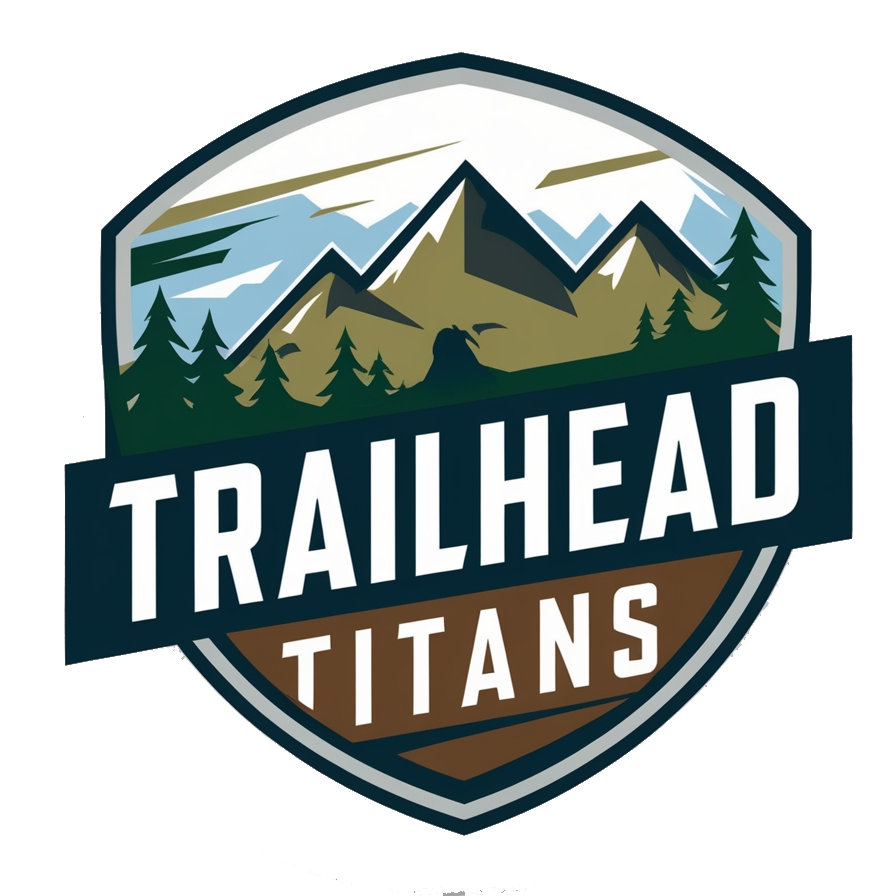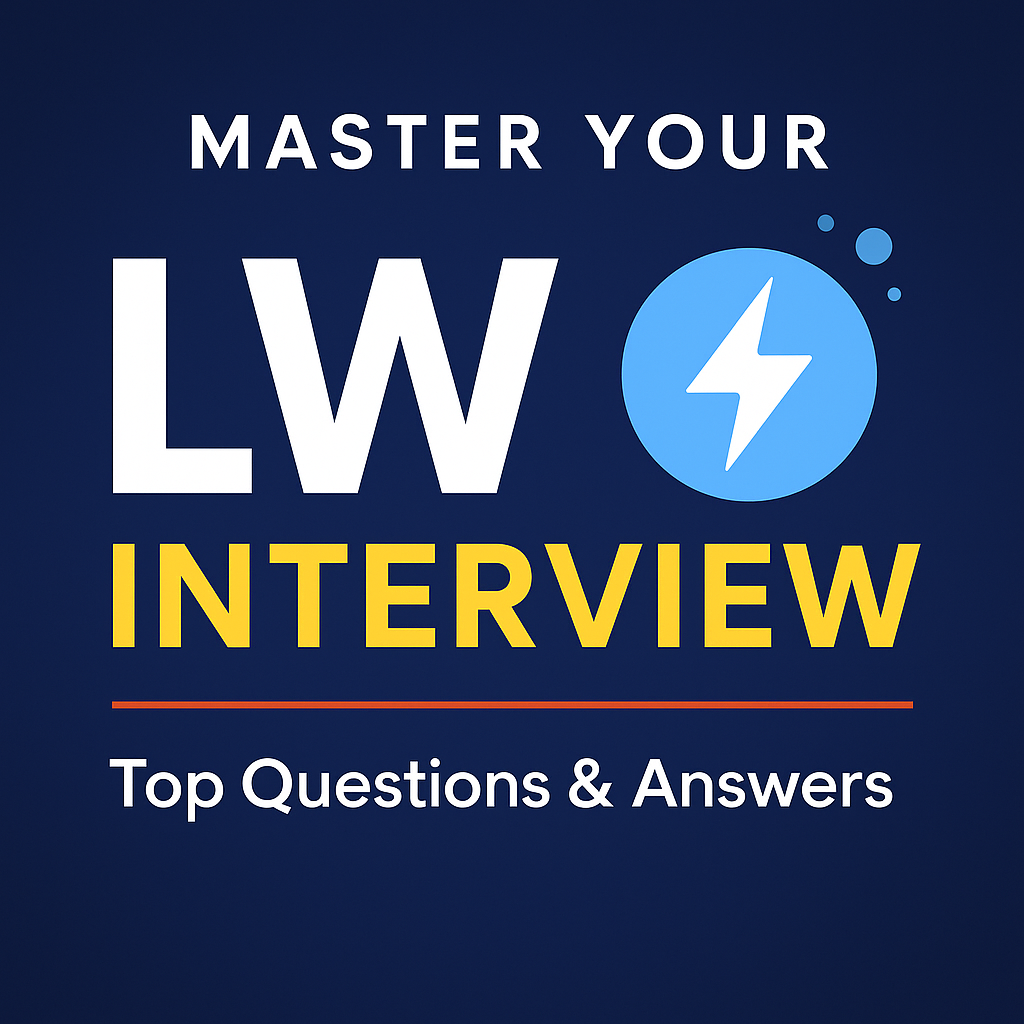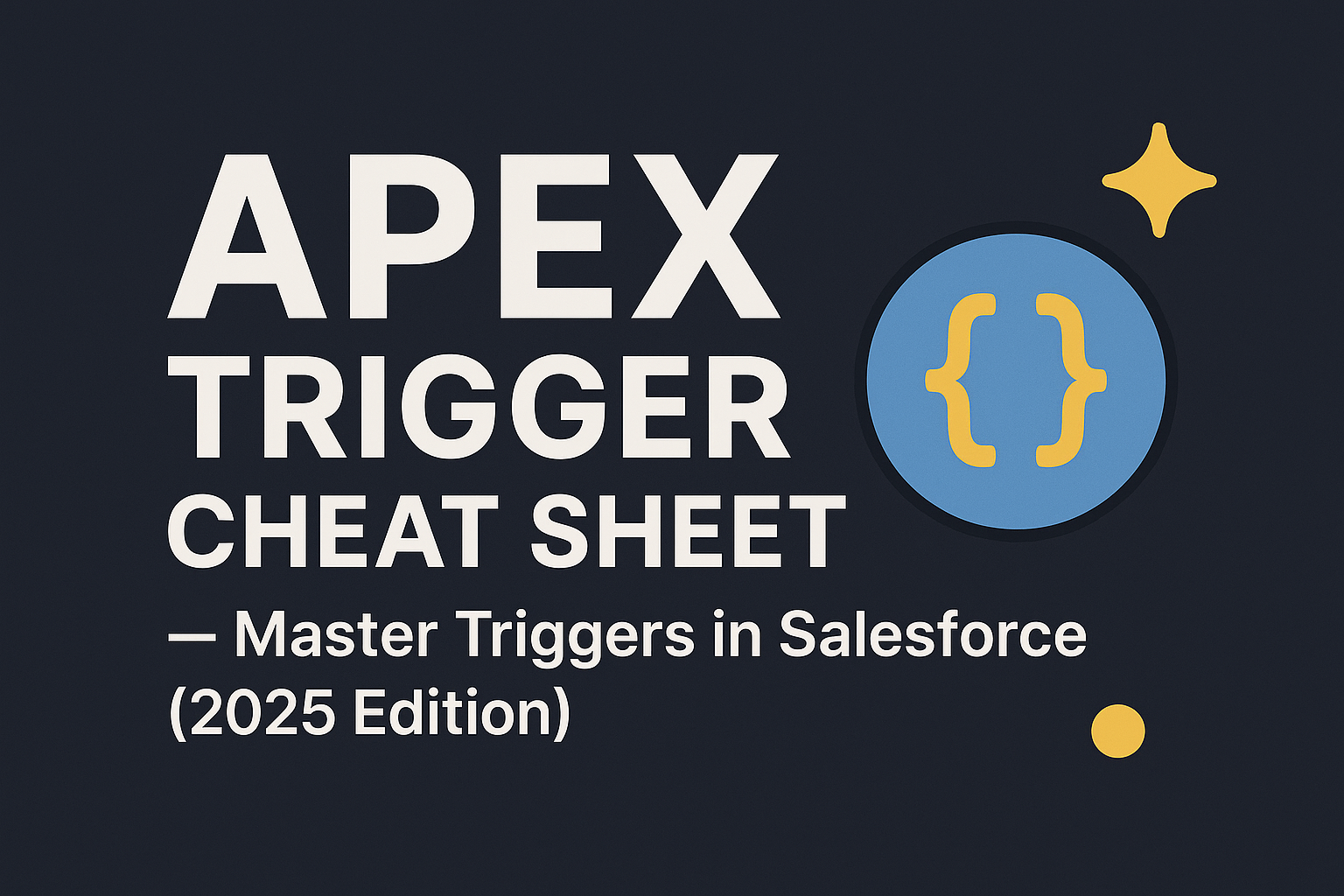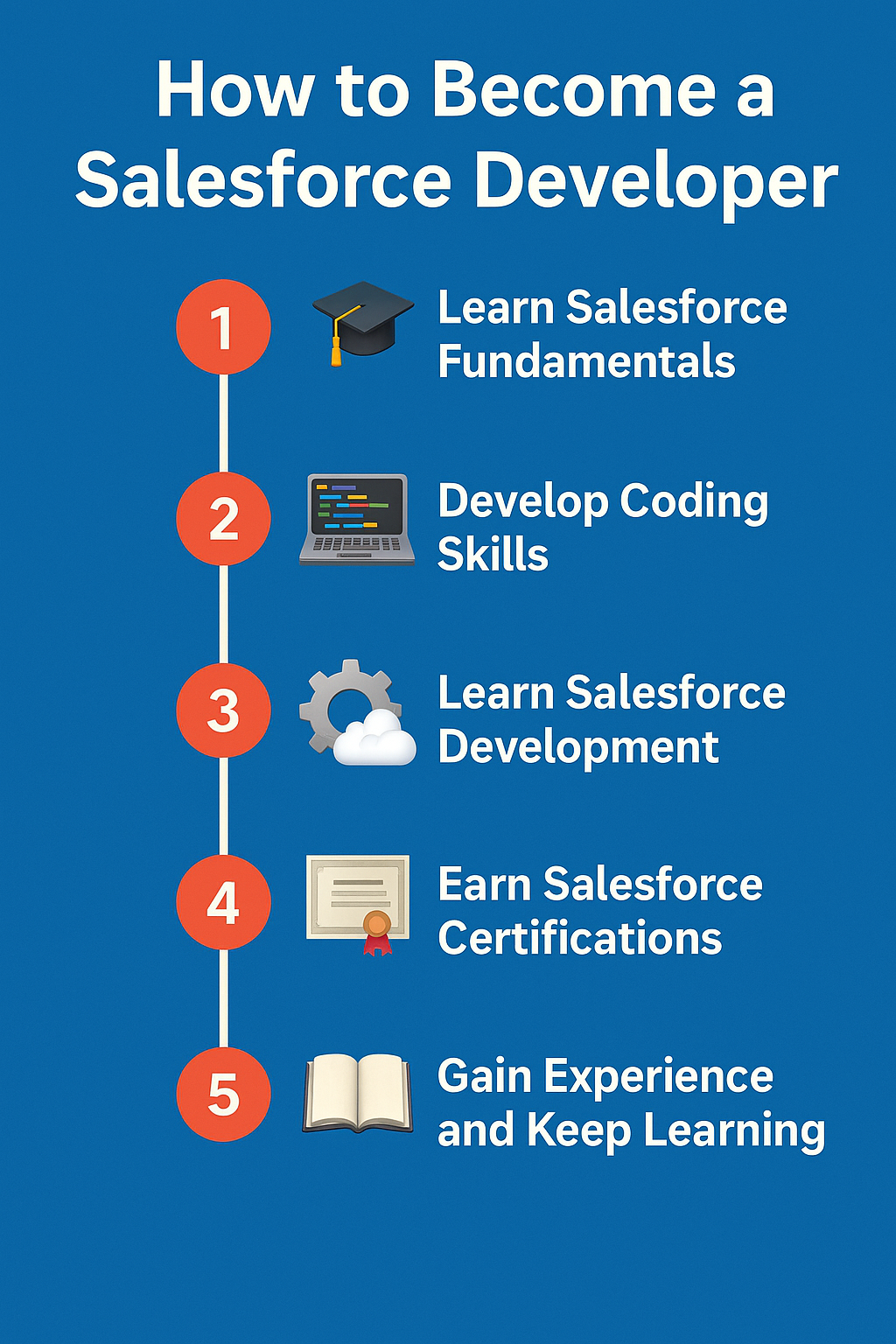Salesforce Admin Interview Secrets: 50 Questions for Success is your ultimate guide to acing that crucial Salesforce Admin interview. This comprehensive resource covers the top 50 questions you are most likely to encounter, along with insightful tips and strategies to help you answer them confidently. Whether you’re a fresher or an experienced professional, this guide will equip you with the knowledge you need to impress hiring managers and secure your dream Salesforce Admin role. From technical queries to scenario-based questions, we’ve got you covered with the secrets to interview success. Get ready to stand out and shine in your next interview!
101. How can you trigger a flow automatically?
Ans
A. Process Builder
B. Workflows
C. Apex
D. Scheduled flows
102. Can you call Apex class from a flow?
Ans. Using an action element, we can call the apex class from a flow.
103. How do you handle exceptions in a flow?
Ans. Exception handling in Salesforce Flow is managed using Fault Paths. When an error
occurs in a Flow element, the execution is directed to a Fault Path where specific
actions can be defined, such as sending error notifications or logging the error
details. This ensures that exceptions are caught and handled gracefully, maintaining
the integrity of the Flow’s operation.
104. In what scenarios should we use a subflow in Salesforce?
Ans. A ‘Subflow’ is used in Salesforce Flow to modularize and reuse logic. It’s ideal in
scenarios where the same set of actions or logic is required in multiple Flows. By
encapsulating this logic in a Subflow, you can maintain it in one place and call it from
various parent Flows, enhancing maintainability and reducing redundancy.
105. What are the approval rules in Salesforce?
Ans. Approval rules in Salesforce determine the specific criteria a record must meet to
initiate the approval process. These rules could be based on any field values in the
record.
106. What is the approval limit in Salesforce?
Ans. The approval limit in Salesforce refers to the restrictions on the steps and the
approvers in an approval process. An approval process can contain up to 30 steps.
Each step can have up to 25 unique approvers. These limits help maintain the
efficiency and manageability of the approval process.
107. Can we have multiple approval processes in Salesforce?
Ans. Yes, Salesforce allows the creation of multiple approval processes for different
scenarios or requirements. However, only one approval process can be active per
object at a time. The active process would depend on the specific conditions and
criteria set within each process.
108. What are the 3 key components of an approval process?
Ans
A. Entry conditions
B. Approval steps
C. Actions
109. What are sharing settings?
Ans. Sharing settings in Salesforce are access control mechanisms that determine who
can see, edit, or delete records. They are used to extend record access to users
beyond organization-wide defaults (OWD) and can be based on criteria such as
record owner or field values. Sharing rules can be created through Setup and are
most valuable when OWDs are set to private or public read-only.
110. How can we bypass security settings?
Ans. Through the profile, we can bypass the security.
111. What are the options in OWD?
Ans
A. Private
B. Public Read Only
C. Public Read/Write
112. What is OWD?
Ans. It is a record-level Security.
113. What is manual sharing?
Ans. At the top of the record, there is a button called sharing and it is visible when the
OWD is only private.
114. What is a sharing rule?
Ans. In Salesforce, sharing rules are exceptions to organization-wide sharing settings that
allow users to access records beyond their role hierarchy. They can be based on
record ownership or field values and can be used to extend access to users in
groups, roles, or territories.
115. How many types of sharing rules are there?
Ans
A. Based on Owner
B. Based on Criteria
116. What is a role?
Ans. The role is the position of the user in an organization.
117. What is a record-level security
Ans
A. Sharing settings
B. Sharing rules
C. Role
D. Public groups
118. What is required to create or view reports
Ans. Profile level permission
119. How many types of reports are there?
Ans. There are 2 types of report types they are:
1. Standard report types
2. Custom report types
120. What are the formats of report types?
Ans
A. Tabular reports
B. Summary reports
C. Matrix reports
D. Joined reports
121. Why are the custom report types showing on the list without being created?
Ans. When creating the objects, you click on the Allow reports checkbox, so it is showing
in the reports list.
122. What happens when you click on the run report?
Ans. The report refreshes with the newly created records.
123. How do we show only N number of records in the reports?
Ans. Just apply the filter by using the Row limit option.
124. What is a tabular report?
Ans. It is a row-column report.
125. What is a summary report?
Ans. It is a row-wise grouping report.
126. What is the extra option we get in summary reports?
Ans. Add Chart
127. How to customize the column labels?
Ans. Go to field layouts click on edit properties and change the name.
128. What is a matrix report type?
Ans. It has row-wise and column-wise Grouping reports.
129. What is a Joint report type?
Ans. We can add one or more report types in a joint report type
130. Can we create a chart for the tabular report?
Ans. No, we cannot create a chart for the tabular report because the tabular report type
does not have a grouping option.
131. What is a multi-tenancy architecture in Salesforce?
Ans. Salesforce's multitenant architecture allows multiple clients, or tenants, to share the
same server and infrastructure while keeping their data isolated. This architecture is
designed to support the different needs of each tenant, and it's more efficient and
cost-effective for companies than dedicated resources.
132. What is a bucket field in reports?
Ans. The bucket field is categorized based on the input field.
133. What is a Dashboard?
Ans. The dashboard is a pictorial representation of the reports.
134. What is case management?
Ans. Salesforce's case management system helps businesses manage and resolve
customer inquiries and issues across digital channels like email, social media, and
contact forms. It collects and organizes customer service interactions, tracks each
case to resolution, and integrates with other tools and third-party software.
135. What is a web to the case?
Ans. We create a web form and embed it into the website we collect the data from the web
and the case will be made in the salesforce.
136. What is email to case?
A. The case will be created whenever you send an email.
137. How do you give the email routing address to a customer?
Ans. We will create an Outlook email and a rule in Outlook saying that if any email comes
to Outlook, please forward it to the salesforce routing address, and then we will give
the Outlook address to the customers. So that whenever an email comes to Outlook
then automatically outlook sends the email to the salesforce and a case will be
created inside the salesforce.
138. For how many objects the assignment rules are enabled?
Ans. For lead and case
139. What are permission sets?
Ans. They are a collection of settings and permissions that allow users to have additional
accesses that they have already gotten from the profile.
140. Can a permission set be assigned to multiple users and vice versa?
Ans. Yes, We can assign a single permission set to multiple users and vice versa. Here
the junction object will be coming into the picture and it is a permission set
assignment.
141. What are the types of permission we have in permission sets?
Ans. There are many types of permissions are there, Some of them are:
1. Assigned app
2. Object settings
3. App permissions
4. Apex class access…etc…
142. What are the permission set groups?
Ans. In Salesforce, a permission set group is a way to bundle permission sets together
based on user roles or job personas and assign them to users. Permission set
groups calculate the combined permissions from the included permission sets and
indicate if the permissions are up-to-date and available for assigned users.
143. What is a case escalation rule in Salesforce?
Ans. In Salesforce, a case escalation rule is a set of criteria and actions that determine
when and how a case should be escalated to a higher level of management or
support. The goal is to ensure that support teams respond to customer issues in a
timely and effective manner.
144. What is an auto-response rule?
Ans. Salesforce's auto-response rules allow businesses to automatically send emails to
leads or cases when they meet certain conditions. This feature can be useful for
managing large amounts of customer interactions and can help businesses improve
customer service by responding quickly and demonstrating responsiveness.
B. There are two types of auto-responsive rules, They are:
1. Lead auto-responsive rule
2. Case auto-responsive rule
145. What is a public group?
Ans. A public group is a set of users, roles, and roles & sub-ordinates, Other public
groups. We can give the permissions or we can give the record visibility or any other
thing we need to give to a set of users there we can use these public groups.
146. What is field-level security?
Ans. Field-level security is simply about which user could able to see or edit the fields.
147. How can we control field-level security?
Ans. We can control field-level security by using profile & permission sets






